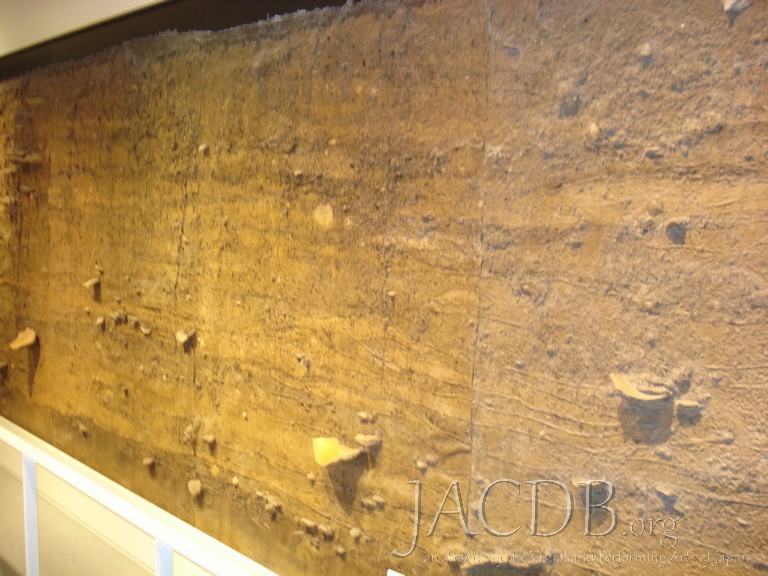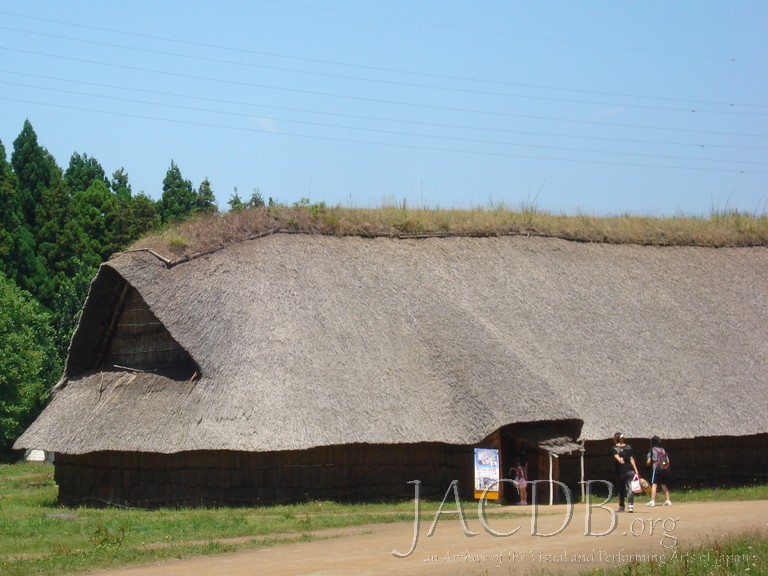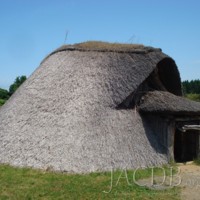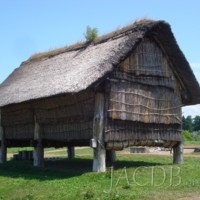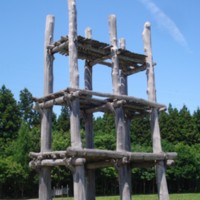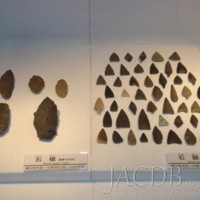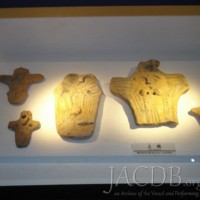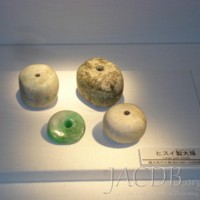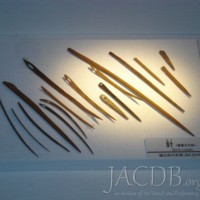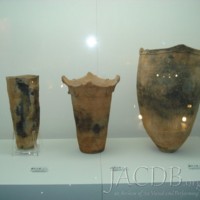Sannai-Maruyama: A Jomon Archaeological Site
The archaeological site at Sannai-Maruyama in Aomori Prefecture provides one of the best portals into the material culture of the Jōmon period (11,000 BCE – 300 BCE). The Jōmon people were a Neolithic hunting and gathering culture who were also among the first cultures in the world to produce pottery. The term Jōmon literally means “rope pattern” and refers to the way some of the Jōmon pottery was decorated by pressing braided rope into the soft clay before the vessels were fired. While evidence is spotty for the first several millennia of this relatively long archaeological period, the site at Sannai-Maruyama has produced a host of new insights into the Jōmon culture of northern Japan in later periods. The site was active from approximately 3,900 BCE to about 2,300 BCE and, compared to earlier settlements, was on a larger scale, capable of housing a population of as much as five hundred at any one time.
That the site contained some interesting archaeological remains was already known in the Edo period (1600-1867). It was not until an excavation that began in 1992 ahead of the construction of a planned new prefectural baseball stadium, however, that the richness of the archaeological material became clear. The construction was put on hold, and in 1996 the prefecture abandoned the project all together in order to preserve the site. In 2000 the area was designated a “Special Historical Site” (tokubetsu shiseki) by the national government, and in 2003 almost 2000 artifacts from the site were added to the list of Japan’s “important cultural properties” (jūyō bunkazai). Today Sannai-Maruyama is both an on-going research site and an archaeological exhibit comprising both indoor displays and reconstructed dwellings and other structures on the grounds. The photographs shown here were taken during a visit to the site in 2011.
Among the most important discoveries to come out of the excavation of Sannai-Maruyama are the size of the settlement and the variety of structures it included. While many Jōmon sites provide traces of small pit-dwellings, Sannai-Maruyama also includes evidence for the existence of other building types, including raised structures and longhouses. Most inhabitants probably lived in family units in individual pit-dwellings, while the raised structures were most likely used for food storage. The longhouses may have served as communal spaces and as indoor workplaces during the long winter months.
Also found at the site were the remains of six huge chestnut (kuri) pillars arranged in a pattern that suggests they supported some large structure. The consensus opinion is that it was some sort of tower or platform, serving perhaps as a watchtower or lighthouse, perhaps, or possibly even used as a ceremonial or ritual site. The reconstructed tower on the site is just a guess at what the original might have looked like, but it does show the scale that was possible with pillars of this size.
References:
Naumann, Nelly. Japanese Prehistory: The Material and Spiritual Culture of the Jōmon Period. Wiesaden: Otto Harrassowitz Verlag, 2000. On Sannai-Maruyama, see pp. 13-19 and passim.
External links:
Special Historical Site Sannai Maruyama Website. http://sannaimaruyama.pref.aomori.jp/english/

